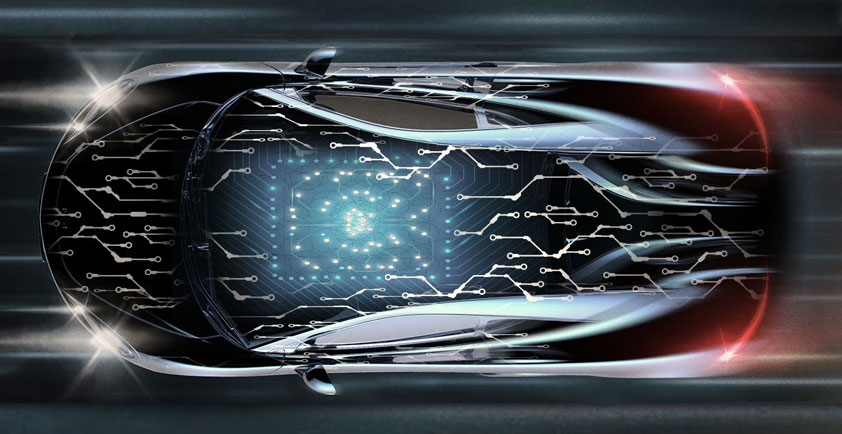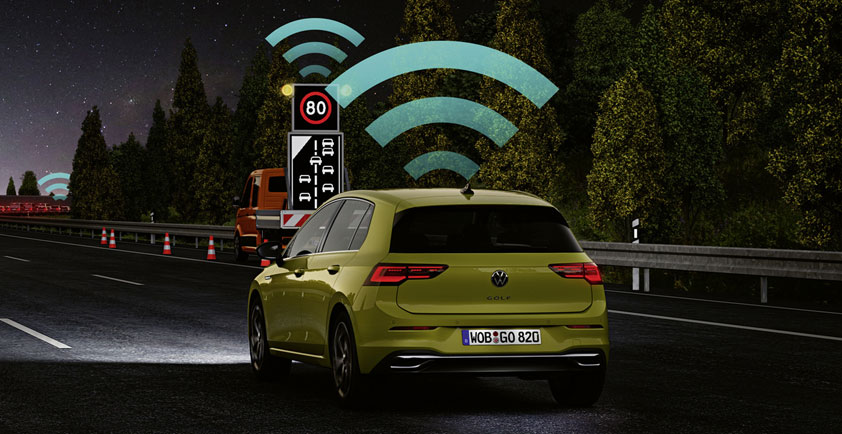

THE CAR THAT ADAPTS FOR YOU: AN EXPERIMENTAL CONCEPT FOR FUTURE VEHICLES
Thanks to state-of-the-art electronic components, future vehicles will be automated, electrically powered, and securely networked – and with interchangeable cockpits, they could also become convertible and flexible.
There’s one connection in all vehicles that has remained untouched by many years of automotive change; the bond between a car’s chassis and bodywork. Since the dawn of the Automotive Age, the chassis has always carried the gearbox, engine and suspension with the cockpit glued, welded or soldered upon it. This has been an accepted and unchallenged premise- up to now.
NXP and Rinspeed have challenged this fundamental thinking with a new experimental concept, one that allows vehicles to become as unique as the individuals that travel within them. The potential, enabled by domain-based architecture, could deliver a new wave of innovation and enable flexible and securely networked mobility. In this concept car’s framework, the cockpit becomes a more personal reflection of an individual’s lifestyle and a self-propelled chassis becomes a workhorse for the community and a model for new revenue.
In the new NXP and Rinspeed concept car the chassis and cockpit are separated. While the chassis remains the most durable component of the vehicle, the cockpit becomes a “pod”, an interchangeable capsule with vast potential for customization. A “Passenger Pod” carries people to work in the morning, a “Food Delivery Pod” transports food during the lunch hour, with its own refrigerated freight room, and a “Cargo Pod” drives at night with an extra-large loading area – all of these pods could share the same chassis through the course of a day.
New architectures that divide vehicle electronics into five domains provide the flexibility to make this bold concept possible. The domains, which span the various roles of vehicles including connectivity, driver replacement, powertrain and vehicle dynamics, body and comfort, and in-vehicle experience domains make reorganizing the ideas of vehicle design possible. Instead of letting the chassis and cockpit age together, both components can go their separate ways to enable optimum utility.


Through this concept, urgent traffic problems could also be addressed. For example, studies show that a standard family vehicle is in motion only five percent a day, but hangs around on streets the rest of the time, blocking valuable space in the inner cities. Wouldn’t it be ideal to enable a 24/7 use of the chassis?
The modular concept could also reduce the number of vehicles on the streets and streamline traffic, while creating more room by eliminating the need for parking spaces as cars are kept in constant state of efficient motion. The chassis could even fit perfectly into a city’s ecosystem by more efficiently managing energy. If required, the chassis could transfer energy back into the power grid or recharge autonomously if overcapacity is available.
This unique modular approach could also bring about new enhanced business opportunities. Imagine free rides in a booked pod that is financed by advertising or promotions. Can you conceive of interchangeable cockpits that evolve into fresh new lifestyle products that inspire the best designers in the world? A host of new and established designers could make their own marks on branded pods with furnishings, fabrics and interior flourishes as well as the design of user interfaces using the best in infotainment technology.
While the pod reflects the tastes of the individual, the chassis combines functions of autonomous driving: such as state-of-the-art sensors that accurately capture and interpret the vehicle’s environment, an electric powertrain and smart antennas that securely connects the chassis to the outside world, the user, the cloud or other vehicles.
The electronics architecture of the fully electric, securely connected and fully autonomous car of the future must also be designed so that individual domains can be updated in the vehicle through over-the-air interface at any time and with maximum security and protection against security breaches, attacks and manipulation. This requires vehicle networks and gateways that are connected efficiently and securely.
What's in it from NXP?
Automation: The sensor fusion solution, NXP BlueBoX, combines the environmental data from sensors such as radar, lidar and camera systems together for safe processing. The goal: high precision sensors, fast processing for maximum safety in self-driving cars.
Connectivity: A smart antenna ensures the secure connection to the outside world. It is based on the latest cybersecurity standards and can integrate automotive-grade WLAN for vehicle-to-vehicle communication, infotainment reception, cellular, ultra wide-band and much more in the smallest of space.
Electric drive: Additional miles can be achieved through high precision battery management and engine control. The Green is NXP'S development platform for this purpose.
Author: Lars Reger, Senior Vice President, Chief Technology Officer at NXP Semiconductors.













